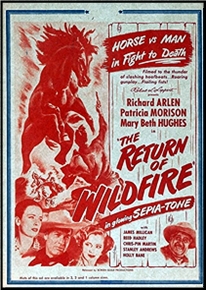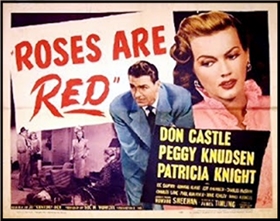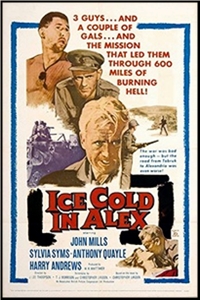July 2021
Monthly Archive
Wed 14 Jul 2021
Posted by Steve under
Reviews[22] Comments
REVIEWED BY DOUG GREENE:
WILL SCOTT – Giglamps. Cassell, UK, hardcover, 1924. No US edition.
I have seldom enjoyed a book more than Giglamps, a collection of short stories about a tramp who sometimes acts as detective and sometimes runs afoul of the law himself — all told with rare warmth and humor. Giglamps himself is a marvelous character:
He was sockless, tieless, collarless and shaveless. His attire was a pair of inadequate trousers, a cutaway coat that had once belonged to somebody else — and probably did still — and a straw hat that could not imaginably ever have belonged to anybody. Twenty in heart, sixty in experience, he was somewhere between the two in years. By inclination he was always disinclined. By profession he did not practise any.
Will Scott’s style is Chestertonian in its use of paradox and unexpected juxtaposition of ideas, but it avoids GKC’s atmospheric preoccupations and occasional obscurity,
“The Vanishing Rouse,” the first story in Giglamps, has two mysteries. First, why did someone steal Giglamp’s dilapidated boots and replace them with “good boots; great boots; boots worthy of being sung, fit to pass into the epics and the legends of highway and casual ward”? Second, how can a house simply disappear like smoke?
Eavesdropping outside a small house in the middle of a field, Giglamps witnesses a murder, When he brings the law to the scene, however. there is no house to be found. This fine tale, filled with humor and a variety of incidents, is damaged only by the unlikelihood that no sign whatever would have been left of the removal of the house.
Just as good a story is “A Holiday By the Sea,” in which Giglamps consciously becomes a detective and discovers a completely unexpected crime. Most of the other stories do not have pure detection, but in each one Giglamps has to resolve some sort of problem.
EQ did not know of Giglamps; if he had, the book surely would have been a Queen’s Quorum choice.
– Reprinted from The Poison Pen, Volume 6, Number 1 (Spring 1984). Permission granted by Doug Greene.
Contents:
The Battle of Sideways · ss Pan Jan 1923
The End of the Road · ss Pan Jul 1923, as “Good-bye Giglamps�
Giglamps in Eden · ss Pan Apr 1923
A Holiday by the Sea · ss Pan Aug 1922
Medals for It · ss Pan Oct 1922
Meeting of Creditors · ss Pan May 1923, as “Giglamps Meets His Creditorsâ€
One in a Million · ss
Roads to Rome · ss Pan Sep 1922
Too Much Mercury · ss Pan Jun 1923
Trussed to Luck · ss Pan Dec 1922
The Vanishing House · ss
When Snakes Were Ladders · ss Pan Nov 1922
A Wish for a Cigar · ss Pan Mar 1923, as “Giglamps Revokesâ€
Tue 13 Jul 2021
Posted by Steve under
Reviews[4] Comments
IT IS PURELY MY OPINION
Reviews by L. J. Roberts
JERI WESTERSON – Spiteful Bones. Crispin Guest #14. Severn House, hardcover, 2020.
First Sentence: Nigellus Cobmartin stood in the courtyard of his family home – its garden walls crumbling, its arched windows overlooking the tired and weedy garden with its dead flowers and gnarled trees – and sighed.
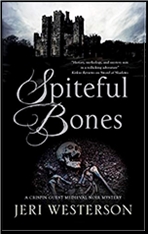
The year is 1398, and Crispin Guest’s house is filled with his assistant Jack, his wife Isabel, and their many children, as well as the satisfaction of watching grow and providing training for Christopher Walcote, the son he can never acknowledge.
Into that tranquility comes John Rykener/Eleanor Cobmartin with an urgent summons. In restoring the home, he inherited, John’s “husband’s” workers uncover a body holding a precious relic. The body had been bound and sealed within a wall for 20 years. It is up to Crispin to discover the killer while protecting the secret of John’s true identity.
One can appreciate that the author of Spiteful Bones, an historical mystery, provides a section of “Notes About Characters,” as well as a “Glossary.” The sections are not only helpful but interesting in themselves.
No one stays the same age forever, having characters who age, and whose life circumstances change, adds realism to the story and, in the 14th book of this series, much has changed for Westerson’s characters. Readers of the series will appreciate that, but even new readers are given a sense of how time has progressed.
Westerson has a wonderful voice. Her dialogue is reflective of the period without being mired in it. She writes with a balance of humor and drama. It is interesting to see how, even in this period, forensic evidence was taken into account— “But it looks as if someone coshed him good. Aye, look at the wood of the uprights here. If he was still awake, there would have been scratches and scuffs from a struggle.”
One issue, however, is the frequent use of Latin phrases. While is it very appropriate to the period, an immediate translation of each phrase, as is often done by other authors, would not have been amiss. Still, there are lines which make one smile— “Sometimes, Jack, the Church, in all its wisdom, is lacking when it comes to compassion.”
The relationships are enjoyable and add dimension yet don’t overtake the plot. They provide richness and emotion. One becomes attached to the characters. There are times where one might question whether Crispin is too modern; too good, too noble. Yet, it is part of the development one has seen in the character and is part of what draws one back to the series.
Spiteful Bones presents an effective twist and an exciting climax. Historical mystery devotees will be pleased.
Rating: B plus.
Mon 12 Jul 2021
Posted by Steve under
Reviews[7] Comments
RICHARD HIMMEL – I Have Gloria Kirby. Gold Medal #179, paperback original, 1951. Reprinted by Gold Medal several times.
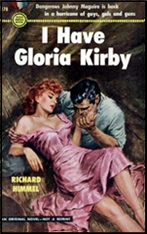
Gloria Kirby was Johnny Maguire’s first love, and when she comes storming back into his life, it’s at least fireworks all over again. But she’s in trouble, hooked on dope, and on the lam with $70,000 in hot money, and who else can she turn to?
Maguire’s not a private aye, but as the next thing but, he’s a semi-successful lawyer, one who’s fought his way up out of a neighborhood on the wrong side of the tracks, the same neighborhood that spawned Gloria Kirby, and her currant boy friend, the notorious Danny Nelson, who wants her back.
Although the fatal attraction of raw sex appeal seems overstated, it is a theme that always struck home in a simpler age. Maguire’s love life is so messed up as to brand him a hopeless romantic, yet with a girl like Tina at home, I doubt that my eye would wander quite so easily.
As for the story, maybe you think you could take it from here. Maybe so, but only if you kept things moving and at the same time mixed things up pretty well by introducing a secondary problem Who stole the money in the first place, and why?
Rating: B
– Slightly revised from The MYSTERY FANcier, September/October 1978.
The Johnny Maguire series —
I’ll Find You. Gold Medal 1950
The Chinese Keyhole. Gold Medal 1951
I Have Gloria Kirby. Gold Medal 1951
Two Deaths Must Die. Gold Medal 1954
The Rich and the Damned. Gold Medal 1958
Sun 11 Jul 2021
REVIEWED BY DAN STUMPF:
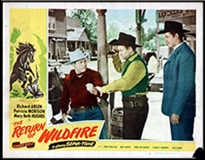
THE RETURN OF WILDFIRE. Lippert, 1948. Richard Arlen, Patricia Morison, Mary Beth Hughes, James Millican, Reed Hadley, Chris Pin-Martin, Stanley Andrews and Mike Ragan. Written by Betty Burbridge and Carl K Hittleman. Directed by Ray Taylor and Paul Landres.
Whence the title? Return of Wildfire isn’t a sequel, and the eponymous stallion never actually leaves anyplace, so the issue of returning doesn’t arise here. Well never mind, it’s a bit draggy at times, but well played, and with a terrific finish.
The story opens on a ranch owned by Stanley Andrews, the widowed father requisite in B-Westerns, with two daughters (Mary Beth Hughes and the lovely Patricia Morison.) Andrews raises horses, and suffers from the depredations of outlaw horse Wildfire, who keeps running off with his stock. But his real problem is with dress-heavy Reed Hadley, who aims to corner the market and will stop at little or nothing to get his hands on Andrews’ herd.

About this time driftin’ cowpoke Richard Arlen blows in, helps out Ms Hughes, who has been injured hunting Wildfire, and is promptly hired on. He also takes a yen for Ms Morison, which leads to some very tiresome complications with Hughes, but before things can get too bogged down, Hadley makes his play and things liven up.
Andrews gets murdered by his own foreman (James Millican, in a well-judged role as a vacillating bad guy) Hadley jumps in and scarfs up the horses in a dirty business deal, and when Arlen whips up replacements from Wildfire’s herd, Hadley just plain steals them, too.
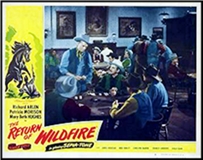
Up to this point, The Return of Wildfire has run on the tepid side, but from here on out, it’s non-stop action, with a running gun battle across the Sierra Peloma Mountains, capped with an exhausting fistfight that recalls similar moments in Winchester 73 and The Naked Spur. And I have to say directors Taylor and Landres do it just as well as Anthony Mann could have. Quite a surprise coming from producer Lippert, and one that makes for fine viewing.
I said The Return of Wildfire was well played, and it is. Besides Millican’s wavering, we get Arlen’s type-cast toughness, and Reed Hadley’s sepulchral villain. And best of all, there’s Patricia Morison, who makes any film she’s in a delight to watch.
Sun 11 Jul 2021
FRANCIS K. ALLAN “The Lost Hours of Murder.” Published in Dime Mystery Magazine, August 1948. Probably never reprinted.

The final story in this issue, “The Lost Hours of Murder,” by Francis K. Allan, is the second of two full “novels” contained therein, and as such runs to all of nineteen and a half (pulp-size) pages.
Allan, by the way, was an extremely prolific writer for the detective pulps. During the years right after the war you could hardly pick one up and not read one of bis stories. In 1945 and 1947 he had a couple of hardcover novels published, but then none from then on until 1976, when he wrote Death in Gentle Grove, which I’m sure nobody else but me remembers. I do because it was one of the first books I did when I started writing reviews for the Hartford Courant.
(I might be wrong, but it’s my impression that Allan went on to law school and better things, thus explaining the 30 year gap in his writing career.)
“The Lost Hours of Murder” concerns a guy who wakes up on what he thinks is Thursday but discovers when he gets to work that it is really Friday, and his partner, with whom he apparently quarreled in the interim, has mysteriously disappeared. It’s a classic situation, but even in full “novel” length, Alla’s tale is crowded, without all the space he needs to do anything with it.
Cornell Woolrich, say, might have done better with the premise, which is a good one, but as it is, only the first half of this one holds any interest at all. There’s no hint of any supernatural influences at work, which was common in stories published in Dime Mystery Magazine, just a straight-forward mystery story, interesting for the moment but also instantly forgettable.
___
Final Thought: Unfortunately, maybe that last phrase would apply just as well to pulp magazines in general. It would make a great epitaph, wouldn’t it? “Throwaway literature at its finest!”
– Slightly revised from Mystery*File #30, April 1991.
Sat 10 Jul 2021
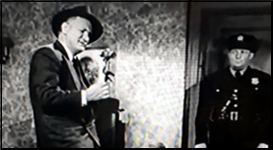
ROSES ARE RED. 20th Century Fox, 1947. Don Castle, Peggy Knudsen, Patricia Knight, Joe Sawyer, Edward Keane, Jeff Chandler, Charles McGraw, Charles Lane, Paul Guilfoyle, Doug Fowley), James Arness (as James Aurness). Director: James Tinling.
With a title such as this one, you could be excused for thinking that this particular film would be a romantic comedy/musical starring Doris Day or Betty Hutton. But no. “Ha!†on you. What this is instead is a snappy 60-minute crime mystery with a cast that’s totally in sync with the story all the way through. (Just take a look at the names. Fans of B-movie mysteries from the 40s will recognize them all.)
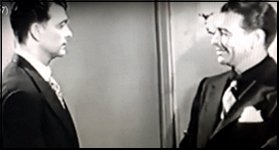
Not only is the cast picture perfect for this sort of thing, the plot has a twist added to a twist that I don’t remember seeing before. Finding a career criminal who looks exactly like the newly elected district attorney and arranging it so the former is ready to step in to impersonate the latter, that’s twist number one. What was new to me was to carry the twist one step further (trying to be clear as I can without revealing all).
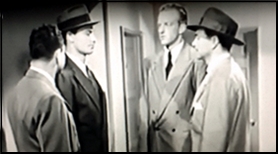
I’m not exactly sure why they came up with the title they did. The movie does open with police lieutenant Joe Sawyer on the scene of a murder of a girl in whose hand is found a red rose, but there’s no real reason for the rose nor, in fact, does the killing have much to do with rest of the story. (See above.)
One other thing that I found amusing, in a trivia-of-the-day sense, was seeing both Jeff Chandler and James Arness in the same movie, both in important but rather minor roles, both in the early stages of their respective careers. Fun facts such as this make movies such as this all the more fun.
Fri 9 Jul 2021
Posted by Steve under
Reviews[3] Comments
ROY HARLEY LEWIS – A Cracking of Spines. Matthew Coll #1. St. Martin’s, US, hardcover, 1981. Previously published in the UK by Robert Hale, hardcover, 1980.

Mood, atmosphere, and background are essential attributes of a detective story, but in and of themselves they’re hardly enough.
Any number of examples abound, but let’s take A Cracking of Spines as one in particular.
Mystery readers invariably gobble up mysteries that involve both books and book collectors, so at first glance here’s one they (we) should go for right away.
Completely permeating Matthew Coll’s hunt for a ruthless gang of antiquarian book thieves is a love for the printed page and showy leather bindings, but — and it hurts to say this — that’s about all this book has going for it. The plot has to be turned upside down before it begins to make any sense at all.
Coll, formerly of military intelligence, is now retired as — guess what? — the new owner of a small English bookshop. His detective abilities turn out to be hampered by a puzzling taste in women, however, and he cripples his own investigation by two disastrous (and obvious) errors in judgment.
In spite of his several faults as a detective, Coll is a rather likeable fellow, and I’11 be looking forward to his follow-up case, due to be published any day now. Let’s hope it’s a little bit more solid than this one, though.
Rating: C
– Slightly revised from The MYSTERY FANcier, September/October 1982.
The Matthew Coll series —
A Cracking of Spines. Hale 1980.
The Manuscript Murders. Hale 1981.
A Pension for Death. Hale 1983.
Death in Verona. Hale 1989.
Miracles Take a Little Longer. Lythway 1991.
Thu 8 Jul 2021
A 1001 MIDNIGHTS Review
by Marcia Muller
FRANCES CRANE – Death-Wish Green. Random House, hardcover, 1960. No paperback edition.

Pat and Jean Abbott, a private investigator and his wife, are returning to foggy San Francisco from a weekend in the sun. As they reach the toll plaza of the Golden Gate Bridge, they spot a familiar car being inspected by highway patrolmen and the local police.
The car, which was abandoned on the bridge, belongs to Katie Spinner, daughter of friends of the Abbotts, and it appears she has jumped off the bridge. Jean Abbott, however, is not convinced the girl committed suicide; and when Pat is hired by Katie’s aunt to investigate the disappearance, it becomes apparent Katie is still alive.
The Abbotts, who often work as an investigative team, focus on bohemian North Beach, one of the last places Katie was seen before she started across the bridge. There they encounter an art-gallery dealer with a taste for Zen Buddhism and opium; a model who calls her favorite color “death-wish green,” and dies wearing it; a mysterious stranger with a large auburn beard who was seen with the missing girl in a coffeehouse; and errant sons and daughters of some of the city’s wealthiest and most respected families. For all Pat Abbott’s investigative skills, in the end it is Jean who sees most of the action and carries the day.
Frances Crane’s descriptive powers are considerable, and the sense of place — particularly of the fog and its effect on San Francisco — is powerful. Her secondary characters are well drawn and indeed far more vividly drawn than either Pat or Jean. Jean, the narrator/observer, remains just that, and we come away without really having gotten to know her. Pat, the detective, is merely a figure going through investigative motions.
Frances Crane has written many other novels, all of them with colors in their titles, featuring the Abbotts. Among them are The Amethyst Spectacles (1944), The Buttercup Case (1958), and The Amber Eyes (1962). In addition to San Francisco, they are set in such locales as Tangier (The Coral Princess Murders, 1954); New Mexico (Horror on the Ruby X, 1956); and New Orleans (The Indigo Necklace, 1955).
———
Reprinted with permission from 1001 Midnights, edited by Bill Pronzini & Marcia Muller and published by The Battered Silicon Dispatch Box, 2007. Copyright © 1986, 2007 by the Pronzini-Muller Family Trust.
Thu 8 Jul 2021
GIGI PANDIAN “The Locked Room Library.†Published in Ellery Queen Mystery Magazine, July/August 2021.
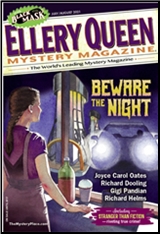
I can’t be the only one who’s noticed that the stories EQMM has been publishing over the past few years have become more and more straight crime-oriented than it was in its early days, when detective fiction was the rule. This current issue suggests that the editors are well aware of the fact as well. As stated in the introduction to this, the lead story, this issue is dedicated to the classical mystery, and to my mind, it’s about time, too.
Even though this is an “impossible†crime, if not an out-and-out locked room mystery, it does take place in an about-to-open privately owned Locked Room Library, where fans of the traditional mysteries of the 30s and 40s can come and check out books difficult to find anywhere else.
Someone is trying to sabotage the effort, however, and stolen from a well-secured glass case is a letter from John Dickson Carr to Frederic Dannay (co-author of the Ellery Queen books) stating he had written an alternate ending to The Burning Court, perhaps without the quasi-supernatural conclusion it was published with.
This sounds better than it reads, I’m sorry to say. The writing is lackluster, the characters not at all memorable, and worse, there’s a ghost involved, or so the thief tries to make everyone believe. Nor does the thief’s motive seem strong enough to for him/her to go to all this amount of trouble.
While it’s good to see someone writing stories like this, I don’t this is the one to convert anyone to the traditional type of puzzle story, if they’re not already so inclined.
Wed 7 Jul 2021
REVIEWED BY DAVID VINEYARD:
CHRISTOPHER LANDON – Ice Cold in Alex. Heinemann, UK, hardcover, 1957. Sloane, US, hardcover, 1957. Also published as Hot Sands of Hell (Zenith ZB-43, US, paperback, 1960).

ICE COLD IN ALEX. ABPC, UK, 1958; released in the US as Desert Attack. John Mills, Sylvia Sims, Anthony Quayle, Harry Andrews, Diane Clare, Richard Leach, Liam Redmond, Walter Gotell. Screenplay: T. J. Morrison, based on the novel by Christopher Landon. Directed by J. Lee Thompson.
They served it ice cold in Alex …
“It†is beer, they serve it ice cold in Alexandria, Egypt at the canteen, and for Captain George Anson who is stationed in Tobruk on the eve of its fall to the advancing forces of General Erwin Rommel, beer has become a beacon of hope amid the routine and routine fear of the pounding being taken as Rommel advances and there is less and less chance of survival…
He knew that the fear had come to stay now — not coming and then draining away, as it had for the last two days.
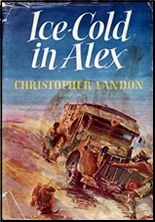
Anson has been drinking more heavily with the fear and now the fear is constant as is the dream of that ice cold drink in Alex. That’s why it seems like a dream when his commander sends him, and Sgt-Major Tom Pugh on a special assignment to escort two nurses across the desert avoiding the Germans to the relative safety of Alexandria.
He can almost taste the beer. “Four Rheingolds come before any bloody war.â€
The two nurses are Sister Diana and Sister Denise, the latter who has nearly lost her nerve under the German bombardment. Anson has missed the convoy, but it they leave now they can rendezvous with another for escort. At least that is the plan.
Like many classics the set-up is a simple one. It’s the complications that follow that make the tale. Complications about the German patrol that lets them go if they will take on the South African civilian Zimmerman with them, like the impossible terrain they are forced to take to avoid more Germans, like mine fields, breakdowns, missed rendezvous, unexpected romance, salt marshes, death, thirst, fear, pain, and just maybe a German spy in their midst and perhaps that he might be their only hope to survive…
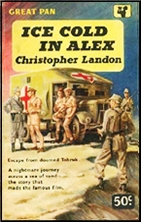
Were they very clever … or complete stupid fools? His mind dodged back to every incident … how they reacted … how his own varying moods of contempt and wariness had pulled him this way and that like a straw in the wind.
Christopher Landon is better known in the UK than here, and mostly for this book, though he wrote several other well-received thrillers. Perhaps it was just his fate to come along during the Golden Age of the British thriller at the same time as Hammond Innes, Victor Canning, Alistair MacLean, Gavin Lyall, Desmond Bagley, and Elleston Trevor (whom Landon most closely resembles). Somehow Landon slipped a little between the cracks, at least with American audiences.
It could be some of his books are a bit bleaker than the other writers on that list , that he wanders into Graham Greene country of moral ambiguity and redemption rather than high adventure, or maybe he was just too grounded to compete with the higher flying competition.
Whatever the reason this book was a masterpiece, and it was snapped up for a film.
Some films are better than the book.

This one took a fine book and turned it into a legendary war film, one of the best of its era, one of the best of any era.
John Mills, the everyman (at least every Englishman) of his acting generation, was Anson. Sylvia Sims was Diana Norton, Harry Andrews (who else) Mechanist Sgt-Major Pugh, and Anthony Quayle, the mysterious man who joins them on their adventure across the Sahara.
J. Lee Thompson of Cape Fear and The Guns of Navarone directed with the same set of skills demonstrated in those other films.
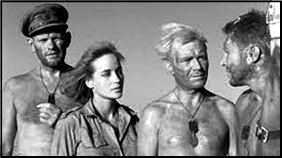
The plot, most of the incidents from the book are the same are but boiled down to a little over two hours, bleakly photographed in black and white, nerve-wracking foot by foot of the journey, their fear, thirst, and distrust writ tautly across the screen, and the nerves ratcheted up right down to the final minutes and the satisfying humanity reaffirming anti climax.
Like Flight of the Phoenix, another adventure film about unlikely survival in the desert this one holds you right down to the end.
Ice Cold In Alex is an anti-war film, it is about humanity among a small group of diverse people in danger. Films like Lost Patrol, Sahara, and Bridge on the River Kwai come to mind. This one stands beside them.

Mills, Quayle, and Andrews steal the show, and Andrews very nearly steals it from the other two. Acting styles may be a bit different than today, some might find there are too many speeches designed to explain things, the considerable acting skills a bit more on the nose than modern audiences are used to.
That really doesn’t matter much. This is a superb film, a classic, one of the best war films from an era when some of the finest war films ever made were being turned out. It features three of the finest actors the British film industry had to offer, and it still has something to say about men in war and where survival outweighs politics.
« Previous Page — Next Page »





